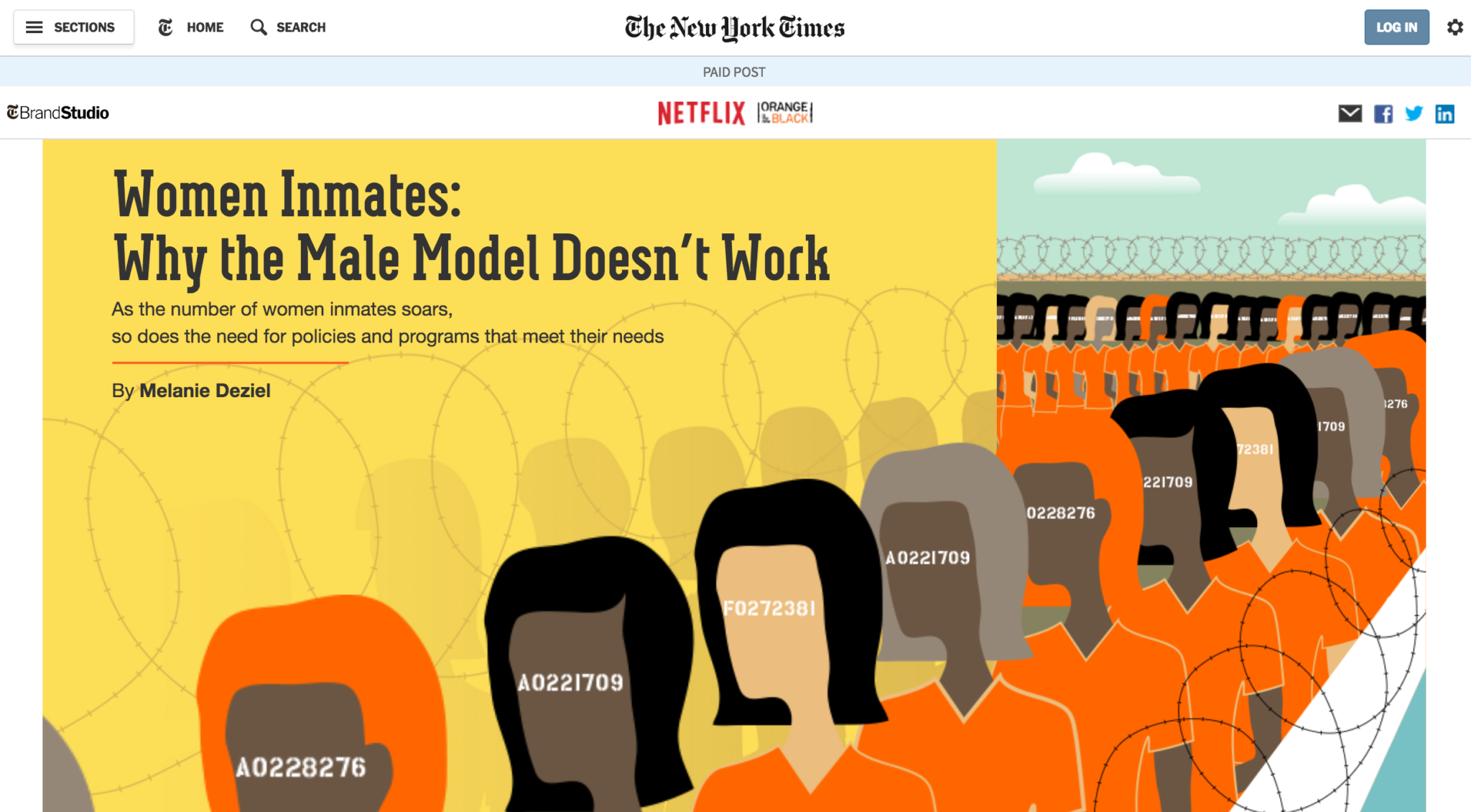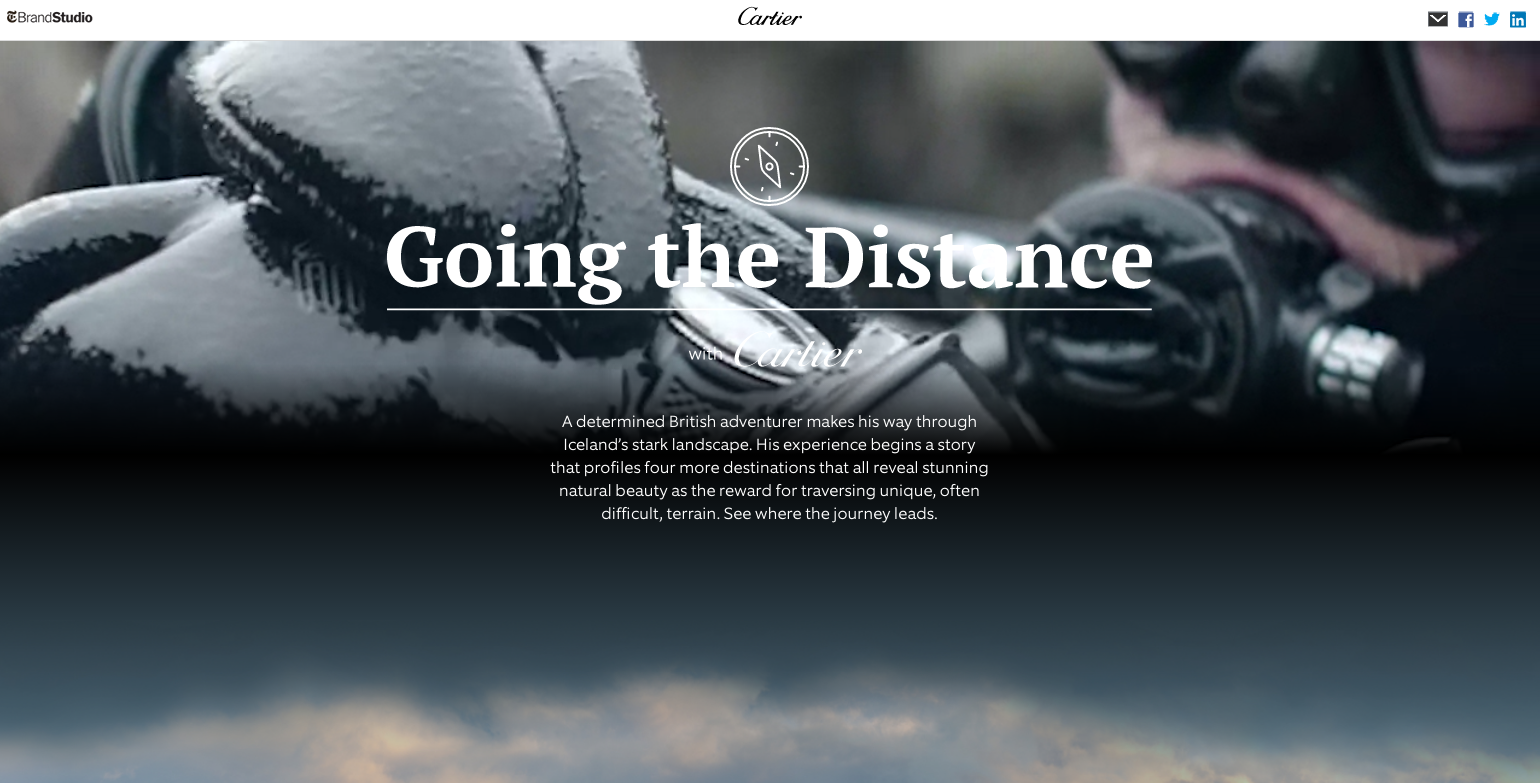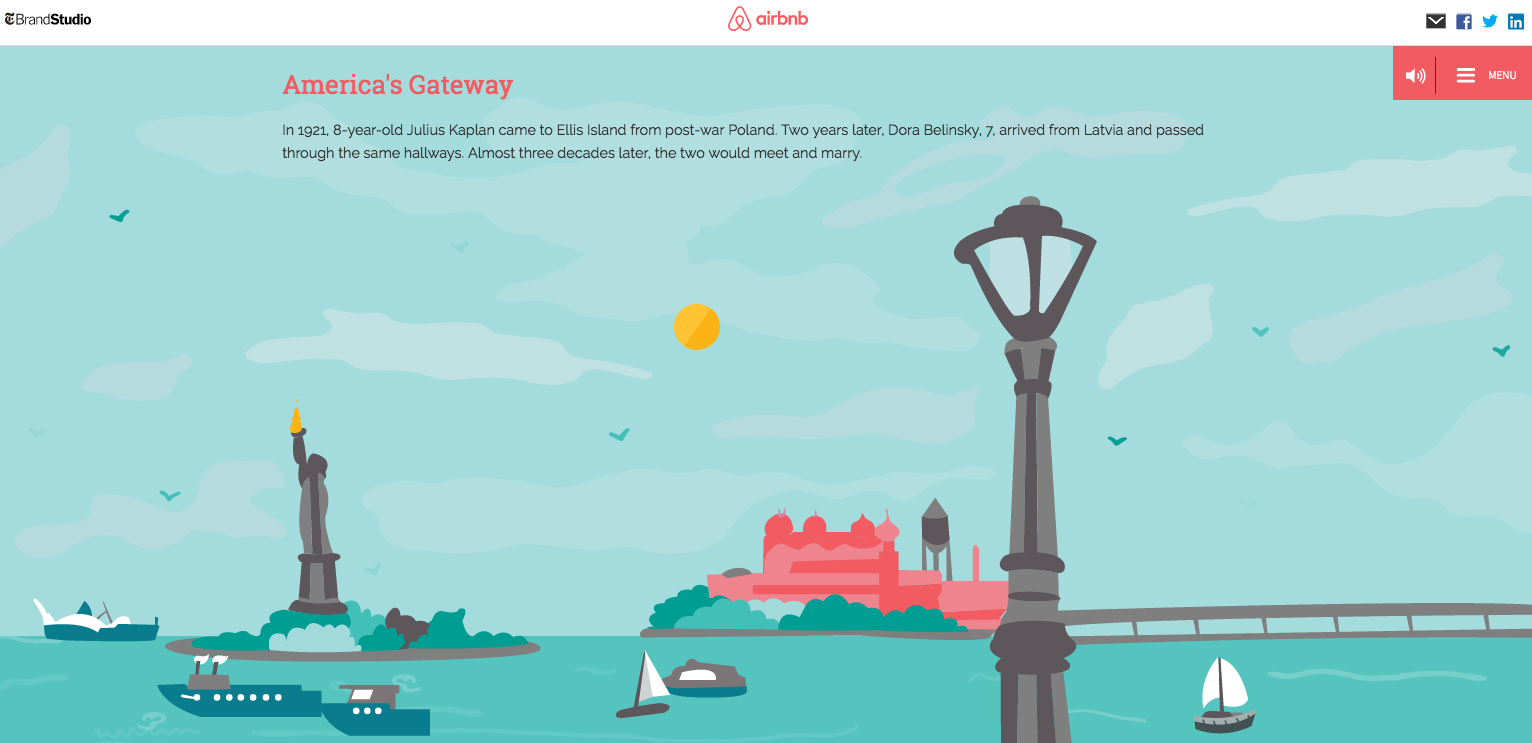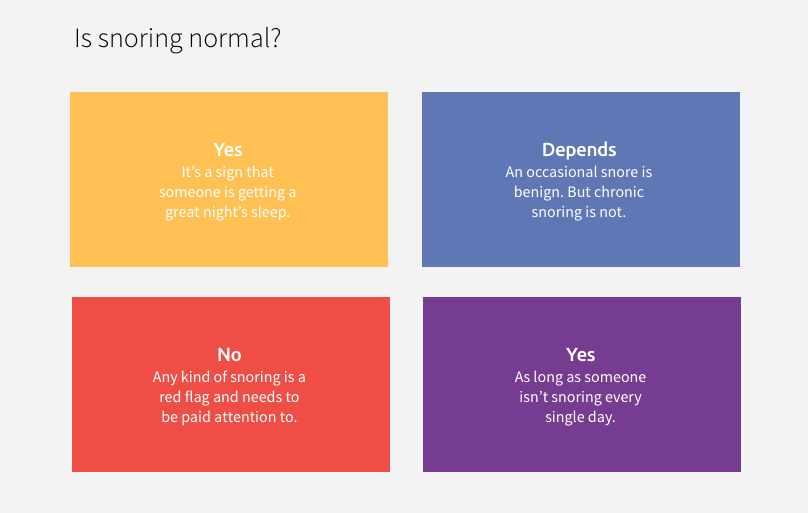Media
3 Keys to Great Content Marketing Design, According to The New York Times
Rachel Gogel is not a fan of the term “visual storytelling.” To her, it doesn’t capture the unique challenges designers face when telling a brand’s story.
Gogel, the creative director for The New York Times’s T Brand Studio, is, of course, an expert visual storyteller herself, helping companies tell their stories through native advertisements. “As people, we are storytellers,” she explained. “The question is, how do we use visuals to influence emotion, to get an audience to view your images, to stay and eventually come back?”
The main goal at the T Brand Studio is to turn brand initiatives into a narrative with the same caliber of reporting as the traditional editorial work produced by The New York Times. For example, when Netflix wanted to promote the second season of Orange Is the New Black, Gogel and her team created the post “Women Inmates: Why the Male Model Doesn’t Work.” In the longform interactive feature, the show was only mentioned once—buried in the middle of the article. The sponsored post covered critical issues women face in federal prison.

On the design end, Gogel worked with writer Melanie Deziel[note]Deziel also contributes to The Content Strategist.[/note] to tell a visual story about women serving time in prison. The hero image, a graphic that inches forward with faceless convicts who are identified by number rather than name, is followed by a five-minute video chronicling the transition of inmates’ first days in prison to the lasting impact of their experience decades later.
For T Brand Studio, branded projects like this illustrate the important role design plays in achieving business goals. For Gogel, when design improves the quality of a viewer’s experience, it can also translate into a boost in quantitative KPIs—such as scroll depth and engagement metrics—that are important to the brand.
In her keynote talk at Contently’s PixelTalks, an event for New York City designers to learn from top digital creatives, Gogel broke down the three elements that drive great content design at The New York Times.
Start with the narrative
When Gogel and her designers take on a project, the first thing they do is start with the story. She warns designers to resist the temptation to build for a platform or a visual gimmick.
“We start with the idea first and then how it will be distributed throughout various platforms,” she said. “The story should always come first, then the medium and platform second.”
A well-crafted storyline should drive the visual creative process. This framework establishes guidelines for the creative team that will translate into an improved experience for the viewer. “If everyone on the team is not thinking about the visual storyline with the creation of the project, it will likely not work out,” Gogel warned.
To jumpstart this process, creative teams should figure out what colors, designs, and visuals are relevant to the brand and product, then use images, photographs, and video to form a connection with the audience.
“Don’t overload them with pop-culture images, memes, or anything that doesn’t resonate with your brand,” Gogel said.
Take T Brand Studio’s native ad for Cartier, “Going the Distance,” which follows London-based adventurer Alastair Humphreys as he treks through Iceland in his Cartier watch. While the scenery is stunning on its own, the way it reflects a story of adventure, travel, and luxury is what makes it a memorable piece of content. “Life is difficult and complicated for everyone,” Humphreys says as we watch him write in his journal and scale a mountain. “It’s also very short. I think it’s important to focus on what you want from your life, rather than just chasing the conventions that society dictates.”

Stimulate the senses
With so many competing websites, attracting consistent attention from an audience can be a problem, which is why Gogel advises designers to be consumer-centric when planning for sensory intake.
“You need to find out what stories your consumers are looking for, then captivate them with an array of visual content that meets their expectations,” she said. “Visuals are a powerful tool to influence emotion. Science shows color and imagery stimulate emotion.”
In T Brand Studio’s project with Airbnb, “Via and Island of Hope, a New Home,” the creative team uses motion graphics, text, and photographs—overlaid with sound of the ocean, seagulls, and boats—to tell the story of Julias Kaplan and Dora Belinsky, two immigrants who passed through Ellis Island separately as children, before marrying later in life.
The experience leads us to the halls of Ellis Island where we find pictures of the couple’s granddaughter and great-granddaughter who were treated to an evening of exploring their ancestry as part of Airbnb’s partnership with the Statue of Liberty–Ellis Island Foundation.


Be relevant
For Gogel, even if your imagery incites a visceral response, that doesn’t necessarily make it relevant for your audience. “Research tells us that you process visuals faster than you do text, but that doesn’t tell us all content should be visual,” she said. “Think about whether an image will speak to your end users.”
In “Dreams and Reality: Why Sleep Matters,” T Brand Studio’s project with health-insurance provider Aetna, visuals take the back seat. The design pushes the reader to focus, rather, on the longform article that discusses the scientific benefits of sleep, and an interactive quiz to test the reader’s sleep knowledge. In this case, the relevant design choice was to emphasize the importance of the text.

The Netflix, Cartier, Airbnb, and Aetna projects make up a small part of the T Brand Studio’s extremely diverse portfolio, but the different goals and styles of these native ads speak to the design capabilities Gogel and her team bring to the table.
“We use this strategy to make cool shit in the hopes that Bill Gates will tweet it,” she joked.
Which, thanks to Gogel’s approach to design, Gates was happy to do.
Get better at your job right now.
Read our monthly newsletter to master content marketing. It’s made for marketers, creators, and everyone in between.




